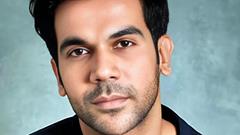Konnichiwa! Kolkatans line up to learn Japanese
Kolkata, Jan 15 (IANS) The animated chatter makes a visitor wonder whether he has stumbled upon a Japanese enclave in a busy residential complex here. But a closer look reveals Indian faces behind those voices.
Published: Thursday,Jan 15, 2009 10:43 AM GMT-07:00
Kolkata, Jan 15 (IANS) The animated chatter makes a visitor wonder whether he has stumbled upon a Japanese enclave in a busy residential complex here. But a closer look reveals Indian faces behind those voices.
Say 'konnichiwa' - or hello - to the Japanese Language Academy (JLA) which was set up 20 years ago at the Salt Lake suburb here by Kum Kum Nandy, who is also an Origami artist.
The JLA has notched up a string of successes and has been among the few institutions at the forefront of this quiet linguistic boom sweeping the eastern part of India.
A California-based corporate house approached Nandy last month to teach 16 of its Indian employees Japanese twice a week, over the next six months.
All such institutes are meeting the demand for professionals familiar with Japanese. And the demand is high due to Japanese collaboration with India in making cars, electronic equipment and software.
Many of Nandy's students find regular placements in corporate and service sectors as interpreters, guides and translators, on a starting salary of about Rs.20,000 ($410) per month.
Now management trainees, software and IT professionals are also joining her courses along with school and college students, to master the nuances and the complexities of the Japanese language and enhancing their job prospects.
Corporates like the Tata Consultancy Services (TCS) and Cognizant Technologies also prefer computer engineers who are well versed in Japanese. TCS reportedly gives generous waivers for the purpose and even reimburses fees.
'One of the happiest and proudest moments of my life,' recalls Nandy, 'was when my student Jhimli Ghosh, a homemaker, cleared the first rung of the advanced level in a single attempt with only 380 hours of study, though a minimum of 600 hours are required.'
Her oldest pupils include two retired professors, one of whom is a woman and is currently preparing for advanced level tests. The other had earlier completed a 10-month teachers' training programme in Japan on a scholarship.
Recently, Nandy scripted and directed a skit, 'Gakusei to Sensei' (Student and Teacher), entirely in Japanese, enacted by tiny tots in her summer classes. They conveyed the difficulties of mastering Japanese characters.
The JLA, which has produced over 400 Japanese speakers since its inception, is recognised by the Japan Foundation for excellence, a distinction it shares with institutions like Viswa Bharati University, Jadavpur University, Rabindra Bharati University and the Ramakrishna Mission.
'Of course, without the support of the foundation it would have been difficult to conduct classes regularly,' Nandy says.
The Japan Foundation also provides books to the academy every year.
The foundation has 20 overseas branches, including in India, to promote cultural, educational and academic activities on behalf of the Japanese government. It offers scholarships, teaching materials, student exchange programmes and guidance.
Explaining the intricacies of learning Japanese, Nandy said it has three distinct scripts - Hiragana (traditional), Katakana, a repertoire of foreign words (in Japanese) and Kanji (pictogram), which denotes a single word with a single picture.
The language has 46 syllables, each being made up of one consonant and one vowel. 'There are a lot of similarities in sentence construction between Bengali, Hindi and Japanese,' she says.
The complete course comprises four levels, each lasting a year or more from the basic (easiest) through intermediate to advanced levels, making the students eligible for the Japanese language proficiency test (JLPT).
The tests are conducted by the Japan Foundation.
The highest level requires a through grasp of 2,000 Kanjis, 10,000 words and 900 hours of study, and the ability to read Japanese newspapers and novels like a native born.
Initially 7,000 people took the JLPT, set up in 1984 in response to a growing demand for standardised Japanese language certification. In 2004, JLPT was offered in 40 countries, including Japan; 302,198 people took the test.
In 2007, 430,137 candidates worldwide took the test - 110,937 for the highest level. Only about a quarter passed the highest level.
In 2008, only eight out of 450 candidates who took the JLPT in eastern India sat for the highest level test; 86 appeared for the next level. Nandy said most candidates were between 19 and 25 years. The candidates included 16 from JLA.
'Very few are able to clear the two rungs of the advanced level in the first attempt,' said Nandy. 'They are meant for serious research, doctoral or technical work and require five to six years to complete.'
(Shudip Talukdar can be contacted [email protected])
Your reaction
 Nice
Nice Awesome
Awesome Loved
Loved LOL
LOL OMG
OMG Cry
Cry Fail
Fail















Comments (0)